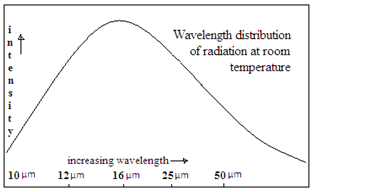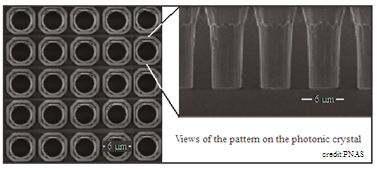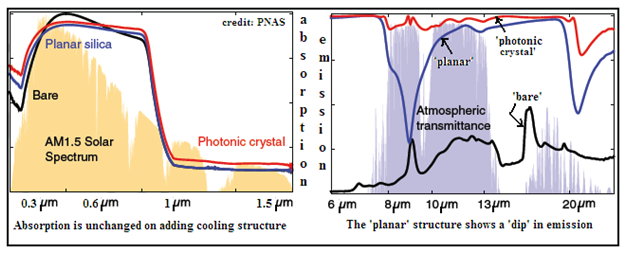A window that lets in the light but sends the heat back may help solar cells become more efficient , says S.Ananthanarayanan.
The last few months have seen a series of devices to step up the performance of solar cells. While new designs, like organic or dye senstised solar cells, or alternatives to silicon are making an entry, an area of advance has been in making better use of the light that falls on the solar cell. One discovery is of nano-patterns that help focus diffused light of a range of frequencies, or colours, on to the cell surface. Yet another has been materials that receive light energy in the ultra violet part of sunlight, and convert it to the frequencies that solar cell can use. This not only helps the cell make use of more of the energy in sunlight, but also reduces the damage and heat that direct UV light is responsible for.
The latest in the list is the current work of Linxiao Zhua, Aswath P. Raman, and Shanhui Fan at Stanford University, an arrangement that cools and helps the solar cells stay at its best working temperature, and also lets in the the light energy that the cell needs to function. This same group, with two others, had recently developed a ‘near total reflector’, which gives off heat waves at frequencies of infra red that can pass through the atmosphere, to help things cool while standing in the sunshine. The present development, which the researchers report in the journal, Proceedings of the National Academy of Sciences, goes a step further, in being transparent, so that light energy can be used even while the heat is being sent away. This can be useful in many areas of working, beyond just solar cells. A greenhouse for warmer climes, which cuts the heat but lets photosynthesis continue, may be one such.
The principle of the action is that outer space is a place of extreme coldness – about 270°C below freezing. If an object to be cooled could be connected to this area, it would chill without the need for refrigeration or air conditioning! Even without a physical connection, all warm bodies radiate heat and should cool, if only they did not gain heat by the radiation of the surroundings. But the earth’s atmosphere acts like a warm blanket, which is not a bad thing, and keeps things comfortably warm even when the sun is not shining. The heat that objects radiate is thus absorbed by the air immediately around the object and radiated straight back. Fortunately, however, there is a range of wavelengths, 8 to 13 micrometers, in the infra red, where the atmosphere does not aborb radiation. This is to say that the atmosphere is transparent to radiation in this range of frequencies. If an object radiates a lot of heat in the form of IR radiation in this range, this heat would head out to space
The trouble is that natural objects radiate heat at a wide range of frequencies, peaking at a particular temperature, no doubt, but largely spread over many frequencies. The bulk of thermal radiation is hence not in the narrow ‘transparent window’ of the atmosphere and objects do not naturally cool down. This is in respect of the normal heat radiation of all objects. But there is another kind of emission of energy, which comes from a resonnance, or the matching of frequencies of IR waves and the atom-scale components of certain materials, in given dimensions, an intermedate between electrical and optical effects of radiation on materials. One such material is silica, which is silicon oxide, and nothing but purified, ordinary sand. The structure of silica is such that high frequency waves are set up by radiation that falls upon it and it is able to emit strongly at the same wavelengths as the ‘window’ in the atmosphere. A sliver of silica placed over a solar cell unit should hence act as both a transparent path for light energy to reach the solar cell as well as an arrangement that would emit heat at the wavelength that can excape from the earth, through the atmosphere. This should then be perfect accessory for the solar cell, which needs both sunlight to generate power, as well as not to get warmed in the sun, as a rise in the temperature brings down its efficiency. What is more, a sliver of silica is seen in practice to actually increase the efficiency of the solar cell!

The Stanford researchers first set up a half mm thick and 10 cm diameter wafer of silicon crystal, the material of semiconductors and solar cells, to stand in as the solar cell. The wafer was polished on both sides and provided, one one side, with a film of silicon nitride, which which would keep light from being reflected off the surface and on the other side there was an aluminium mirror. The silicon was also ‘doped’ with the correct additives, so that it behaved exactly like real solar cell material. While this was the ‘bare structure’, two more assemblies were with the addition of a ‘photonic cooling’ structure, and the efficiency of absorbtion of light and warming behavior all three were assessed. Of the two ‘cooling structures’ added, the first was just a half mm thick layer of silica, while the second was a half mm thick, polished silica crystal, with a lattice pattern of holes, 10 microns deep and 6 microns apart. Silica is transparent to light of all wavlengths in sunlight and while it shows strong emission in the IR, its electric properties also create a ‘dip’ in the absrption and hence emission just at the ‘atmospheric window’ wavelength, which reduces its effectiveness. But the physical pattern created in the second kind of ‘cooling structure’ was able to overcome this limitation and allow high emission, which sould lead to effective cooling,

The measurements of how well the arrangement absorbs light in the shorter wavelengths of the sunlight is shown in the first of the graphs. We can see that high level of absorption for the ‘bare structure’ is almost unchanged with the silica layer and actually increased with the photonic crystal layer, an effect caused by its greater anti-reflection and light capture ability. The second graph shows the level of emission, in the IR region. We can see that the ‘bare structure’ has low emission and in the case of the simple silica layer, there are dips at the 8-13 micron and the 20-30 micron ranges. With the photonic crystal layer, however, the emission stays high at all wavelengths.

While these results show that the photonic crystal structure has the characteristics required, field trials were carried out with the three assembiles actually exposed to the winter sun on a Stanford rooftop for a three hour period.The bare structure was found to warm up in the sun by 50°C above the surroundings. The assembly with the simple silica layer warmed 12°C less, while the assembly with the photonic crystal was 13°C cooler. This greater coolness of the third structure becomes more important which we consider that this arrangement also absobs the most energy, as we see in the first graph.
While the experiment shows a general method of cooling devices or surfaces which need to be exposed to sunlight for their function, the case of solar cells is one where there is a direct effect on efficiency. Solar cells drop efficiency by about 0.45% for every 1°C rise in temperature. Keeping the temperature down by 13°C thus means a nominal increase of efficiency by aout 5% and considering that solar cells work at about 20% efficiency, this is a gain of a whole % point.
------------------------------------------------------------------------------------------